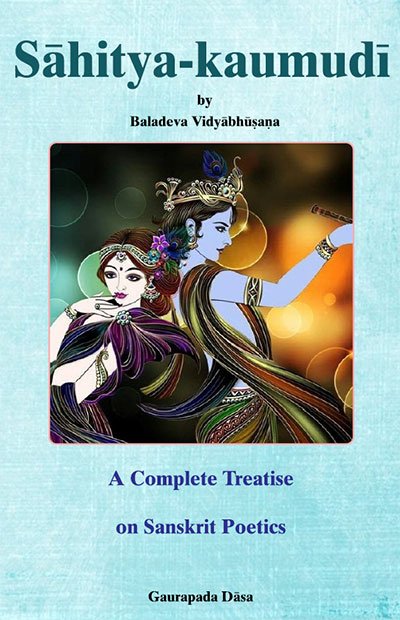Sahitya-kaumudi by Baladeva Vidyabhushana
by Gaurapada Dāsa | 2015 | 234,703 words
Baladeva Vidyabhusana’s Sahitya-kaumudi covers all aspects of poetical theory except the topic of dramaturgy. All the definitions of poetical concepts are taken from Mammata’s Kavya-prakasha, the most authoritative work on Sanskrit poetical rhetoric. Baladeva Vidyabhushana added the eleventh chapter, where he expounds additional ornaments from Visv...
Text 10.138
क्रमेणोदाहरणम्,
krameṇodāharaṇam,
Examples are shown in order.
tvad-aṅghri-mūlaṃ bhajatāṃ mukunda lābho’stu dūre vapuṣo nijasya |
cirantanasyāpi bhaved vināśaḥ svabhāva evaiṣa tava prasiddhaḥ ||
tvat-aṅghri—of Your feet; mūlam—the soles; bhajatām—for those who serve; mukunda—O Mukunda; lābhaḥ—gain; astu—may it be; dūre—far; vapuṣaḥ—of the body; nijasya—own; ciraṃtanasya—of the subtle one (“which has existed from time immemorial”); api—even; bhavet—can occur; vināśaḥ—destruction; svabhāvaḥ—nature; eva—only; eṣaḥ—this; tava—Your; prasiddhaḥ—well-known.
O Mukunda, let those who serve Your feet never become rich so that their subtle bodies may come to an end. This nature of Yours is well known. (Alaṅkāra-kaustubha 8.184)
atra nindayā stutiḥ.
Here praise is implied by the expressed faultfinding.
